-
 Bitcoin
Bitcoin $106,754.6083
1.33% -
 Ethereum
Ethereum $2,625.8249
3.80% -
 Tether USDt
Tether USDt $1.0001
-0.03% -
 XRP
XRP $2.1891
1.67% -
 BNB
BNB $654.5220
0.66% -
 Solana
Solana $156.9428
7.28% -
 USDC
USDC $0.9998
0.00% -
 Dogecoin
Dogecoin $0.1780
1.14% -
 TRON
TRON $0.2706
-0.16% -
 Cardano
Cardano $0.6470
2.77% -
 Hyperliquid
Hyperliquid $44.6467
10.24% -
 Sui
Sui $3.1128
3.86% -
 Bitcoin Cash
Bitcoin Cash $455.7646
3.00% -
 Chainlink
Chainlink $13.6858
4.08% -
 UNUS SED LEO
UNUS SED LEO $9.2682
0.21% -
 Avalanche
Avalanche $19.7433
3.79% -
 Stellar
Stellar $0.2616
1.64% -
 Toncoin
Toncoin $3.0222
2.19% -
 Shiba Inu
Shiba Inu $0.0...01220
1.49% -
 Hedera
Hedera $0.1580
2.75% -
 Litecoin
Litecoin $87.4964
2.29% -
 Polkadot
Polkadot $3.8958
3.05% -
 Ethena USDe
Ethena USDe $1.0000
-0.04% -
 Monero
Monero $317.2263
0.26% -
 Bitget Token
Bitget Token $4.5985
1.68% -
 Dai
Dai $0.9999
0.00% -
 Pepe
Pepe $0.0...01140
2.44% -
 Uniswap
Uniswap $7.6065
5.29% -
 Pi
Pi $0.6042
-2.00% -
 Aave
Aave $289.6343
6.02%
What does it mean when the EXPMA fast line crosses the slow line but the trading volume is sluggish?
A bullish EXPMA crossover with low volume may signal weak momentum and potential false breakouts in crypto markets.
Jun 16, 2025 at 08:28 pm
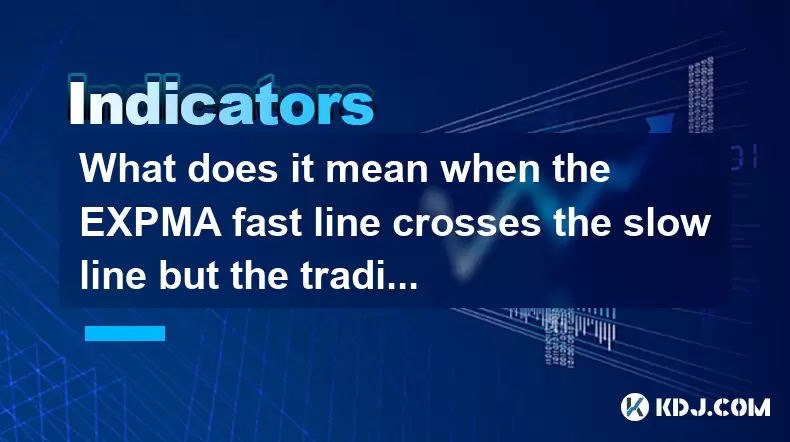
Understanding the EXPMA Indicator
The EXPMA (Exponential Moving Average) is a technical analysis tool used by traders to identify potential trend reversals and confirm existing trends. It differs from the standard moving average by placing more weight on recent price data, making it more responsive to new information. The indicator typically consists of two lines: the fast line, which reacts quickly to price changes, and the slow line, which smooths out price fluctuations over a longer period.
When analyzing cryptocurrency markets, traders often rely on EXPMA crossovers as signals for entering or exiting positions. A bullish signal occurs when the fast line crosses above the slow line, while a bearish signal is generated when the fast line crosses below the slow line. However, these signals must be interpreted within the broader context of market conditions, particularly volume.
Key Takeaway: EXPMA helps detect momentum shifts in crypto prices but should not be used in isolation.
What Happens When the Fast Line Crosses the Slow Line?
A crossover between the EXPMA fast line and slow line suggests a shift in momentum. If the fast line moves above the slow line, it indicates that short-term momentum may be overtaking long-term trends, potentially signaling an uptrend. Conversely, if the fast line drops below the slow line, it could indicate weakening momentum and a possible downtrend.
However, in the cryptocurrency space, where volatility is high and false signals are common, such crossovers need confirmation from other indicators or market data. In particular, trading volume plays a crucial role in validating the strength of a signal.
Important: Crossovers without corresponding volume increases can be misleading and may not lead to sustained price movements.
The Role of Trading Volume in Confirming Signals
Trading volume reflects the number of assets traded over a specific period. In crypto markets, volume is a key metric for determining whether price action is supported by genuine market interest. High volume during a price movement typically confirms the strength of that move, while low or sluggish volume suggests hesitation among traders.
When the EXPMA fast line crosses the slow line but trading volume remains low, it raises concerns about the validity of the signal. This situation may suggest that although the price has technically shifted direction, there isn't enough buying or selling pressure to sustain the move.
Critical Insight: Low volume during a crossover may indicate a lack of conviction among traders, increasing the likelihood of a false breakout or reversal.
Interpreting the Scenario in Cryptocurrency Markets
In the volatile world of cryptocurrencies, technical indicators like EXPMA are widely used but must be carefully analyzed alongside volume and other metrics. Suppose Bitcoin’s EXPMA fast line crosses above the slow line, suggesting a bullish signal, but the 24-hour trading volume shows little change or even decline — this could imply that large players are not actively participating in the rally.
Such a scenario might result in a short-lived bounce rather than a strong upward trend. Retail traders might jump in based solely on the indicator signal, only to find themselves trapped in a sideways or even reversing market due to the absence of institutional or whale activity.
Practical Tip: Always cross-check EXPMA crossovers with volume trends before making trade decisions in crypto markets.
How to Respond to This Market Condition
If you observe an EXPMA crossover with weak volume, consider the following steps:
- Avoid immediate entry: Wait for additional confirmation such as increased volume, candlestick patterns, or support/resistance levels aligning.
- Use complementary indicators: Combine EXPMA with tools like RSI, MACD, or OBV to filter out false signals.
- Monitor order book depth: A shallow order book despite a crossover could signal a lack of real demand.
- Observe timeframes: Sometimes, lower timeframe charts show crossovers that aren’t present on higher timeframes — always check multiple views.
- Set stop-loss orders: Even if you decide to take a position, protect yourself from sudden reversals.
Caution: Acting on a crossover without volume validation can lead to premature entries and unnecessary losses.
Frequently Asked Questions
Q1: Can I still trade when the EXPMA crossover occurs with low volume?
Yes, but with caution. You may consider entering with a smaller position size and wait for volume to pick up before adding more exposure.
Q2: How do I differentiate between a valid and invalid EXPMA crossover?
Valid crossovers usually come with rising volume, strong candlestick formations, and alignment with broader market sentiment. Invalid ones often occur in consolidation zones or during periods of low liquidity.
Q3: Should I ignore all crossovers if volume is low?
Not necessarily. Some early-stage breakouts begin with low volume and gain traction later. Use other tools to assess the probability of continuation.
Q4: Does this principle apply equally across all cryptocurrencies?
Generally yes, but smaller cap coins tend to have less reliable volume data due to manipulation risks. Be extra cautious with altcoins showing similar patterns.
Disclaimer:info@kdj.com
The information provided is not trading advice. kdj.com does not assume any responsibility for any investments made based on the information provided in this article. Cryptocurrencies are highly volatile and it is highly recommended that you invest with caution after thorough research!
If you believe that the content used on this website infringes your copyright, please contact us immediately (info@kdj.com) and we will delete it promptly.
- 2025-W Uncirculated American Gold Eagle and Dr. Vera Rubin Quarter Mark New Products
- 2025-06-13 06:25:13
- Ruvi AI (RVU) Leverages Blockchain and Artificial Intelligence to Disrupt Marketing, Entertainment, and Finance
- 2025-06-13 07:05:12
- H100 Group AB Raises 101 Million SEK (Approximately $10.6 Million) to Bolster Bitcoin Reserves
- 2025-06-13 06:25:13
- Galaxy Digital CEO Mike Novogratz Says Bitcoin Will Replace Gold and Go to $1,000,000
- 2025-06-13 06:45:13
- Trust Wallet Token (TWT) Price Drops 5.7% as RWA Integration Plans Ignite Excitement
- 2025-06-13 06:45:13
- Ethereum (ETH) Is in the Second Phase of a Three-Stage Market Cycle
- 2025-06-13 07:25:13
Related knowledge
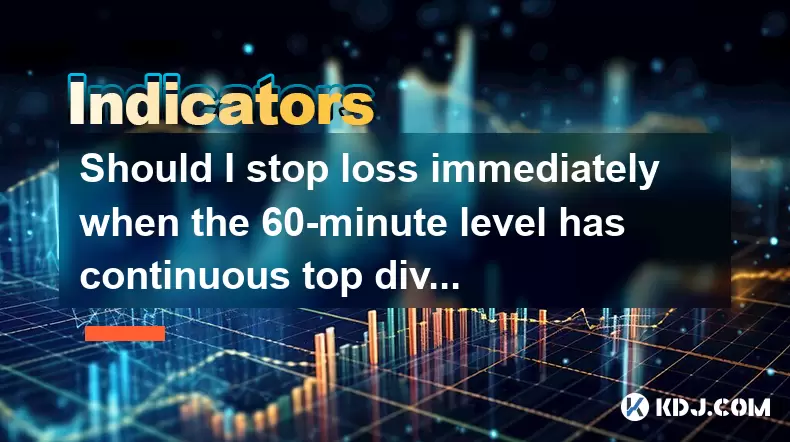
Should I stop loss immediately when the 60-minute level has continuous top divergence?
Jun 17,2025 at 05:28pm
Understanding Top Divergence in the 60-Minute ChartIn cryptocurrency trading, top divergence refers to a technical signal where the price of an asset makes higher highs while the indicator (often RSI or MACD) makes lower lows. This is commonly interpreted as a sign of weakening momentum and potential reversal. When this occurs on the 60-minute chart, it...
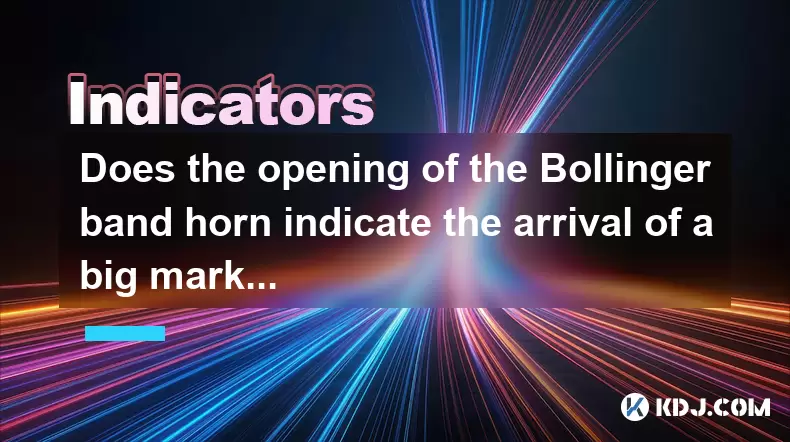
Does the opening of the Bollinger band horn indicate the arrival of a big market?
Jun 17,2025 at 06:28pm
Understanding the Bollinger Bands and Their StructureBollinger Bands are a widely used technical analysis tool in the cryptocurrency market, developed by John Bollinger. They consist of three lines: a simple moving average (SMA), typically set at 20 periods, and two standard deviation bands above and below this SMA. These bands dynamically expand and co...
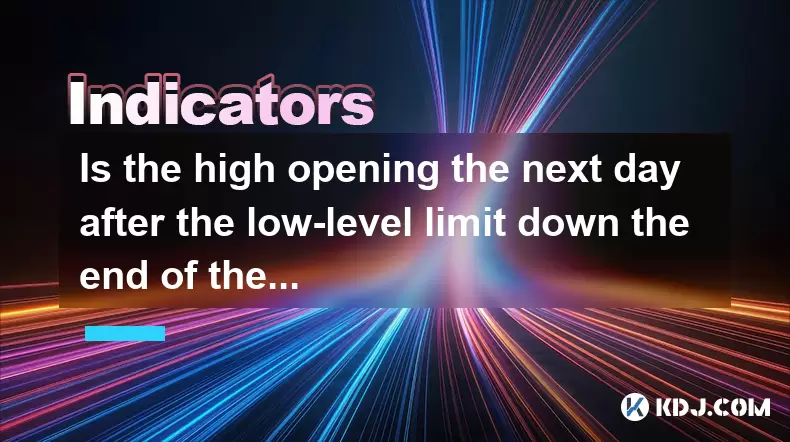
Is the high opening the next day after the low-level limit down the end of the wash?
Jun 17,2025 at 05:57pm
Understanding the Concept of a Limit Down and Its ImplicationsIn the world of cryptocurrency trading, a limit down refers to a situation where the price of a digital asset drops sharply, reaching its maximum allowable decline within a specific time frame. This mechanism is often seen on exchanges that implement daily price limits to prevent excessive vo...
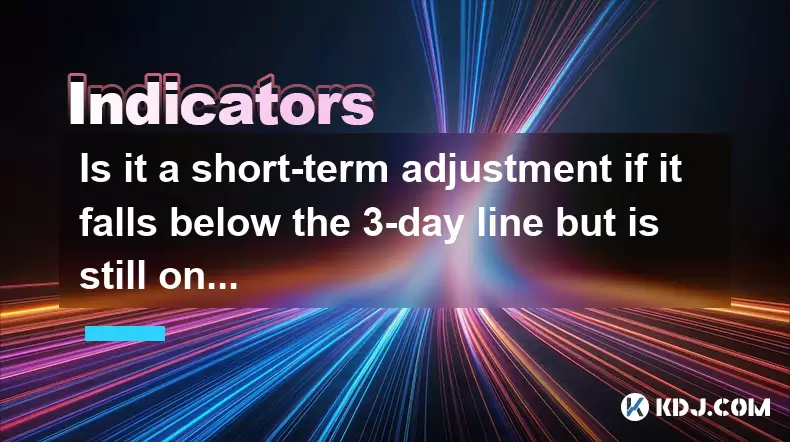
Is it a short-term adjustment if it falls below the 3-day line but is still on the 10-day line?
Jun 17,2025 at 04:07pm
Understanding the 3-Day and 10-Day Moving AveragesIn cryptocurrency trading, moving averages are essential tools for gauging trend strength and potential reversals. The 3-day moving average is a short-term indicator that reflects recent price action with minimal lag, making it highly sensitive to sudden market shifts. In contrast, the 10-day moving aver...
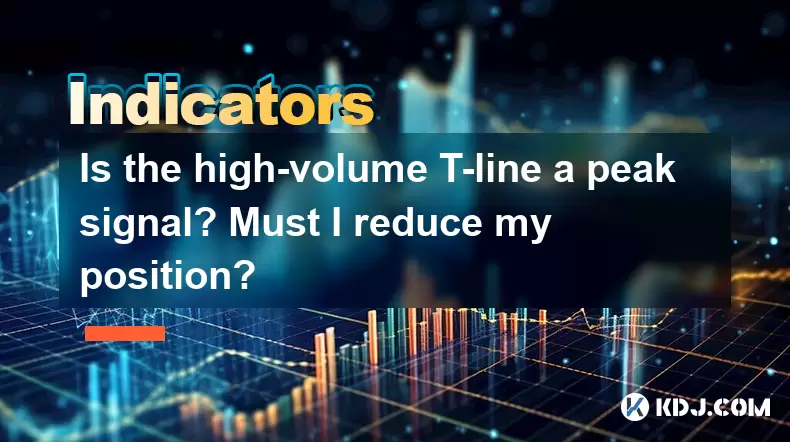
Is the high-volume T-line a peak signal? Must I reduce my position?
Jun 17,2025 at 06:07pm
Understanding the T-Line Pattern in Cryptocurrency TradingIn cryptocurrency trading, technical patterns are frequently used by traders to anticipate price movements. One such pattern is the T-line, which appears on candlestick charts and is characterized by a long upper or lower shadow with little or no body. A high-volume T-line occurs when this patter...
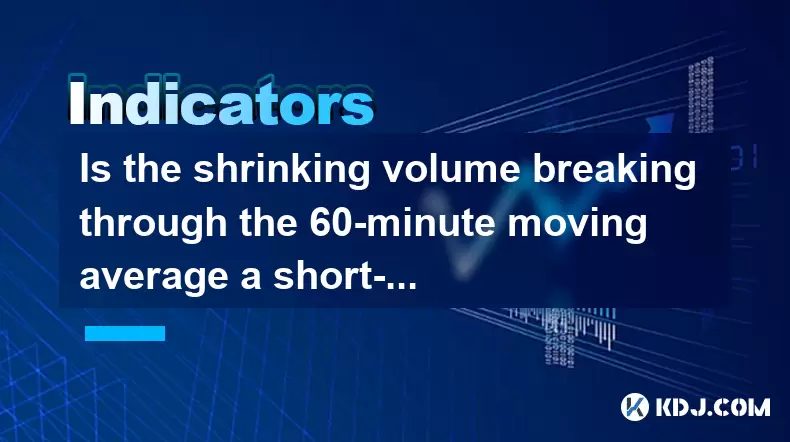
Is the shrinking volume breaking through the 60-minute moving average a short-term weakness? Should I run?
Jun 17,2025 at 06:21pm
Understanding the 60-Minute Moving Average in Cryptocurrency TradingIn cryptocurrency trading, the 60-minute moving average is a popular technical indicator used by traders to assess short-term trends. This metric calculates the average price of an asset over the last 60 minutes and updates with each passing minute. Traders often use it to identify pote...

Should I stop loss immediately when the 60-minute level has continuous top divergence?
Jun 17,2025 at 05:28pm
Understanding Top Divergence in the 60-Minute ChartIn cryptocurrency trading, top divergence refers to a technical signal where the price of an asset makes higher highs while the indicator (often RSI or MACD) makes lower lows. This is commonly interpreted as a sign of weakening momentum and potential reversal. When this occurs on the 60-minute chart, it...

Does the opening of the Bollinger band horn indicate the arrival of a big market?
Jun 17,2025 at 06:28pm
Understanding the Bollinger Bands and Their StructureBollinger Bands are a widely used technical analysis tool in the cryptocurrency market, developed by John Bollinger. They consist of three lines: a simple moving average (SMA), typically set at 20 periods, and two standard deviation bands above and below this SMA. These bands dynamically expand and co...

Is the high opening the next day after the low-level limit down the end of the wash?
Jun 17,2025 at 05:57pm
Understanding the Concept of a Limit Down and Its ImplicationsIn the world of cryptocurrency trading, a limit down refers to a situation where the price of a digital asset drops sharply, reaching its maximum allowable decline within a specific time frame. This mechanism is often seen on exchanges that implement daily price limits to prevent excessive vo...

Is it a short-term adjustment if it falls below the 3-day line but is still on the 10-day line?
Jun 17,2025 at 04:07pm
Understanding the 3-Day and 10-Day Moving AveragesIn cryptocurrency trading, moving averages are essential tools for gauging trend strength and potential reversals. The 3-day moving average is a short-term indicator that reflects recent price action with minimal lag, making it highly sensitive to sudden market shifts. In contrast, the 10-day moving aver...

Is the high-volume T-line a peak signal? Must I reduce my position?
Jun 17,2025 at 06:07pm
Understanding the T-Line Pattern in Cryptocurrency TradingIn cryptocurrency trading, technical patterns are frequently used by traders to anticipate price movements. One such pattern is the T-line, which appears on candlestick charts and is characterized by a long upper or lower shadow with little or no body. A high-volume T-line occurs when this patter...

Is the shrinking volume breaking through the 60-minute moving average a short-term weakness? Should I run?
Jun 17,2025 at 06:21pm
Understanding the 60-Minute Moving Average in Cryptocurrency TradingIn cryptocurrency trading, the 60-minute moving average is a popular technical indicator used by traders to assess short-term trends. This metric calculates the average price of an asset over the last 60 minutes and updates with each passing minute. Traders often use it to identify pote...
See all articles

























































































